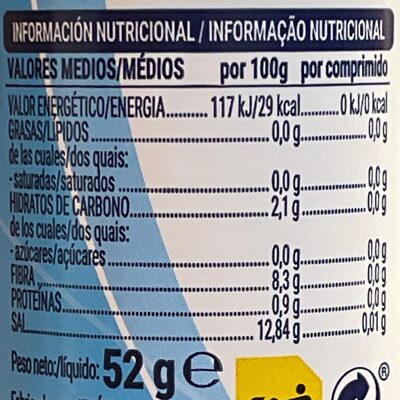Ciclamato y sacarina - Hacendado - 52 g
This product page is not complete. You can help to complete it by editing it and adding more data from the photos we have, or by taking more photos using the app for Android or iPhone/iPad. Thank you!
×
Barra-kodea: 8480000198020 (EAN / EAN-13)
Izen arrunta: Edulcorante de mesa a basde de ciclamato y sacarina
Kopurua: 52 g
Ontziratzea: en:Plastic, en:Tube, es:Green dot
Markak: Hacendado
Kategoriak: en:Sweeteners, Elikagai-gehigarri, en:Sugar substitutes, en:Artificial sugar substitutes, en:Sodium cyclamate, en:Tabletop sweeteners
Etiketak, ziurtagiriak, sariak:
es:Recicla-amarillo
Manufacturing or processing places: Alicante, España
Saltzen diren herrialdeak: Espainia
Matching with your preferences
Ingurumena
Ontziratzea
Transportation
Report a problem
Datuen iturria
Product added on by openfoodfacts-contributors
Last edit of product page on by 5m4u9.
Produktuaren orria -gatik editatua alia, autorotate-bot, einsfran, jorgeteixeira, kiliweb, marcosgdf, mxsndg, packbot, roboto-app, tacite-mass-editor, yuka.V0tVdEtiOEN1dlV4eHNjOXpnbngrOHh5NTc2ellsK0dGYlZJSVE9PQ.








